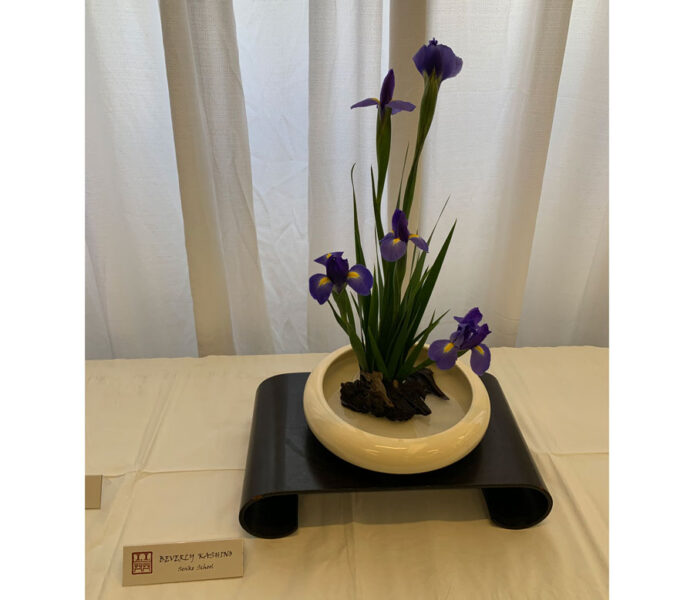By David Yamaguchi The North American Post
The 47th Annual Cherry Blossom Festival (Sakura Matsuri) was resumed as a “hybrid” in-person and online event April 8-10 after being held virtually for two years owing to the COVID-19 pandemic. The event has been held at Seattle Center since 1976.
The festival’s footprint at Seattle Center was smaller than in recent years, occupying about half of its former spread across three buildings. One reason was the expansion of the former Key Arena, now Climate Pledge Arena, home of Seattle Kraken NHL hockey and Seattle Storm WNBA basketball. The enlarged sports complex engulfed the earlier building west of Fisher Pavilion, now the festival’s main venue. A second reason for a smaller matsuri was the reduced number of nonprofit groups participating because of the pandemic. Accordingly, the former small sea of nonprofit booths spanning half the main floor of the Armory was also missing.
In the Armory, the festival still used the main performance stage, as well as the upstairs central display areas, which this year were venues for ikebana (Japanese flower arranging), large hanging Japanese calligraphy scrolls, and “Go” (Japanese chess). However, absent from the upstairs were events previously held in the classrooms, such as Japanese film screenings.
Turning to the matsuri, the ikebana room was serene on Saturday morning. There, hostess Bev Kashino explained the essence of the basic Senke-style on display. The arrangements represent heaven, earth, and man.
Later, Dean Ishiki, a retired psychologist, gave an ikebana overview on the Fisher Pavilion stage. The art originated in China and was imported with Buddhism to Japan, where it flowered into many different schools.
Among the various Fisher booths, Mari Wilson, the “kimono lady” of many local Japanese cultural gatherings, held down the Fukushima Kenjinkai booth. Responding to a question, she explained that she owns 150 kimonos, which seem more than that, owing to her mixing and matching them with various obis.
In the JCCCW booth, there were the familiar faces of Lori Matsukawa, Dee Goto, and Arisa Nakamura.
The Seattle JACL booth was held down by Bill Tashima and Kyle Kinoshita on Saturday. They were joined by Bihoa Caldwell on Sunday.
The Mariners booth was giving out Ichiro bobble heads, in exchange for a name and contact information for marketing follow up.
There was a new sake-tasting booth.
Moreover, many of the booth representatives, spoke knowledgeably about other community organizations, not represented, which they participate in as well.
Andrea Mano held down the Hiroshima Kenjinkai booth on Sunday. The Mano family has participated in the organization of this association for many years. On questioning, she commented that the Seattle Buddhist Temple as yet remains closed to in-person services.
“We have many elderly members,” she explained.
Karen Yasutake, who later joined Kashino at the front desk of the Ikebana room on Saturday, similarly replied that she is now roku-dan, a sixth-degree black belt in judo at Seattle Dojo.
In merely walking the festival’s grounds, one also learns things from conversations that the booths foster. In the “Go” room, my Saturday-afternoon companion, Kyo Miyamoto, formerly of Tokyo and newly hired for the NAP staff, explained that board strategy in “Go” remains a last bastion where humans can still outwit computers using artificial intelligence (AI).
In terms of COVID-19 safety, both days felt safe. For unlike pre-pandemic matsuris, one did not have to wade through crowds. The attendance was sufficient to make it worth all participants’ and performers’ time, yet still manageable. Visitors were comfortably dispersed throughout the festival except for popular Armory main-stage performances, such as drumming.
Moreover, it speaks well of the local Nikkei community that nearly everyone walking around was masked. It is not such a big inconvenience for Japanese and Japanese Americans. The health of others is more important.
Overall, this observer came away with admiration for the persistence of all voluntary participants — the big brush calligraphers who manage to paint in front of a live audience while keeping their clothes ink-free, the tea ceremony participants, the Japanese traditional dancers with their shamisen accompanists, the koto players, the drum groups…. Many have been quietly mastering their arts for years.
By occasionally sharing their skills, the participants allow the rest of us to see and learn more about cultural activities we don’t see every day. In doing so, they recharge our souls, and thereby, help us keep going, too.
The bottom line is that the Cherry Blossom Festival remains a worthwhile community endeavor. It provides opportunities to say hello to friends and acquaintances we haven’t seen for a while. These timeless truths hold, whatever the pandemic may throw at us from now.
P.S. The forecasts of the Institute of Health Metrics & Evaluation, UW, which extend to August, are encouraging.








